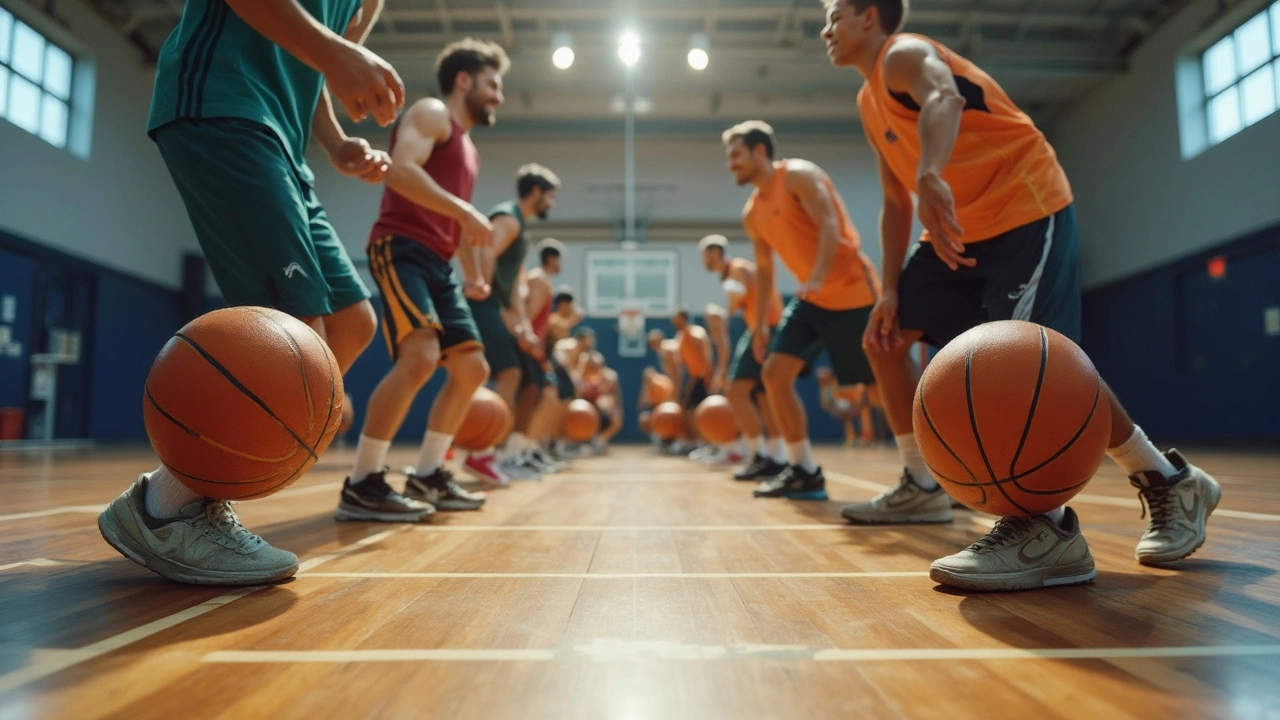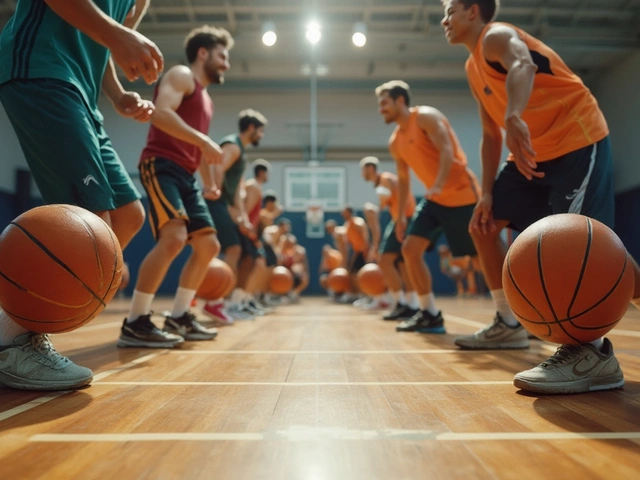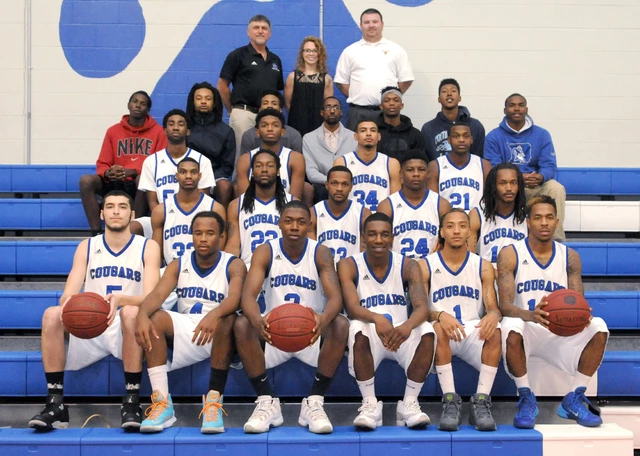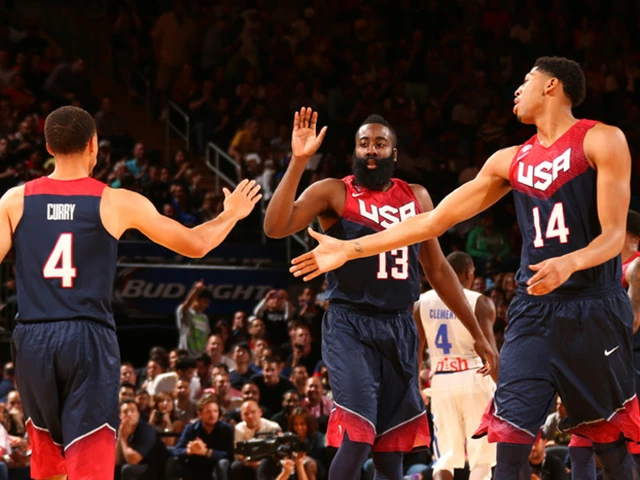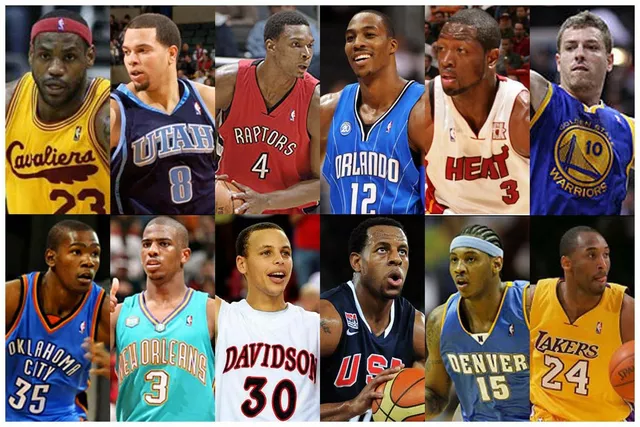Ask anyone who plays pickup basketball inside a gym: not all balls are made equal. Grab a cheap rubber ball and your game will feel off from the start—noisy bounce, slippery grip, and a weird feel on the hands. The best indoor basketball actually feels soft to the touch, hugs your palm when you dribble, and snaps crisply off your fingers on a jump shot. That comes down to what it’s made of and how it’s built for indoor courts, not the street.
The difference isn’t just marketing. Indoor basketbal uses full-grain leather or advanced composite leather that’s designed for smooth hardwood, not rough outdoor asphalt. That’s why a top-rated balll is grippy and gets better the more you use it—instead of degrading, it breaks in like a good pair of sneakers. Bounce matters too. You want a true, predictable rebound but not a balll that goes flying across the gym at the lightest tap.
- What Sets an Indoor Basketball Apart
- Choosing the Right Balll for You
- Tips for Keeping Your Basketball in Top Shape
- Top Picks for Best Indoor Basketballs
What Sets an Indoor Basketball Apart
The first thing people notice about a best indoor basketball is the way it feels right out of the box. The material is the biggest game-changer. Indoor balls use full-grain leather or high-quality composite leather, while outdoor balls usually stick to rubber. Leather gives you that soft, broken-in touch that players love—but only if you’re playing on wood or synthetic gym flooring. Put it on asphalt and it wears out fast, so there’s a reason for this split.
Real indoor basketbal also wins when it comes to grip and moisture control. Leather and top composite covers absorb sweat better and actually get grippier the longer you play. No one likes a ball slipping out on a deep three. Plus, these materials help keep a consistent bounce, which matters for dribbling, passing, and shooting. Flatter, inconsistent bounces can throw off even simple layups, which is why material and build are a big deal.
One overlooked detail is the bladder inside the ball—the part that holds the air. Indoor models almost always use butyl bladders, which do a much better job of holding pressure than cheaper latex ones. That means less air leaks, a better bounce, and a lot less time pumping up your balll every week.
Check out this quick comparison to spot the key differences:
| Feature | Indoor Basketball | Outdoor Basketball |
|---|---|---|
| Cover Material | Full-grain/composite leather | Rubber or cheap composite |
| Intended Surface | Wood/synthetic gym floors | Concrete/asphalt |
| Grip | Improves with play | Degrades with play |
| Air Retention | Butyl bladder (superior retention) | Latex/rubber bladder |
| Durability | Breaks in, but not for outside use | Tougher for rough surfaces |
If you’re wondering why the pros only use indoor basketballs, this is exactly why. NBA games use genuine leather Spalding or Wilson balls (the two main brands), and they don’t even touch blacktop with those for practice. Indoor ballls aren’t just for show—they are built for the best possible play in the right setting.
Choosing the Right Balll for You
Picking the right indoor basketbal isn’t just about grabbing whatever’s on sale. There’s a real difference in how a ball feels, handles, and lasts, based on the material, size, and even your own playing style. Let’s dig in so you don’t waste money or get stuck with a dud.
First thing: always check the balll’s material. Most of the best indoor basketballs use either full-grain leather or high-end composite leather. Best indoor basketball brands like Wilson and Spalding use microfiber composite covers, which makes the ball soft and really grippy. Pure leather models, like the Wilson Evolution, can actually get better with age but need a few games to break in. Cheaper balls use rubber and are fine outdoors but get slippery fast on a gym floor.
- Size Matters: Adults play with size 7 (29.5” circumference), while youth or women’s leagues use size 6 (28.5”). Double-check you’re not buying a kid’s ball by mistake.
- Grip and Channels: Deeper grooves make the ball easier to control for crossovers and sharp passes. Some people like wide channels, others like them tighter—see what feels best in your hand.
- Bounce Consistency: A quick test: drop the ball from shoulder height. Good balls (at proper PSI) should bounce back to about waist height. Consistency means your dribble isn’t all over the place.
- Feel: Grab display models if you can and try gripping and spinning them. The ball should stick in your hand, not slide, but not feel tacky or too hard.
Here's a simple breakdown of common indoor basketball specs so you can compare:
| Model | Material | Official Size | Price Range |
|---|---|---|---|
| Wilson Evolution | Composite Leather | Size 7 | $65-$80 |
| Spalding TF-1000 Legacy | Composite Leather | Size 7 | $55-$75 |
| Molten GG7X | Composite Leather | Size 7 | $60-$75 |
| Wilson Official NBA Game Ball | Full-Grain Leather | Size 7 | $200+ |
Don’t let a flashy design fool you. Focus on grip, bounce, and comfort in your hand. If you sweat a lot, seek a ball with moisture-wicking grip. And if you like to palm the ball, the channel depth makes a real difference. Try renting or borrowing a few top models if you’ve got the chance, because personal feel is hard to judge off a screen. Your hands will let you know when you’ve found the right one.
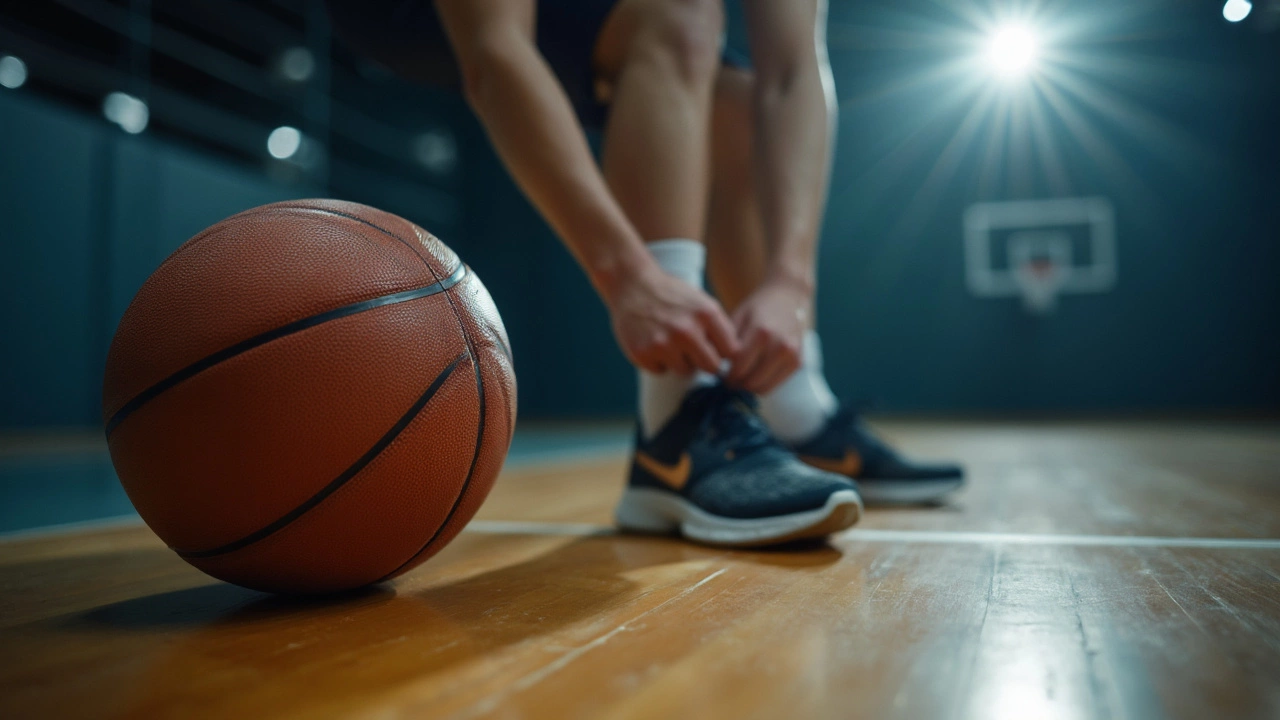
Tips for Keeping Your Basketball in Top Shape
If you drop fifty bucks or more on the best indoor basketball, you definitely want it to last. Indoor balls aren’t cheap, and they’re way easier to ruin than the outdoor ones. So, let’s talk real strategies for making yours survive season after season.
- Use it only indoors. Hardwood is gentle on an indoor basketball. Asphalt or concrete will chew up the cover in days, leaving it slick and dead-feeling. Even a quick game outside can ruin the grip.
- Keep it dry. Leather and composite balls hate moisture. Wipe sweaty hands before handling and store your ball in a dry spot. Water warps the cover and ruins the feel fast.
- Don’t overinflate. Check the pressure with a standard gauge—most balls should sit at 7.5 to 8.5 psi. Anything more and you risk stretching the seams until the ball goes out of round or loses its bounce.
- Store smart. Don’t leave your ball in the trunk, a hot garage, or against a wall for days. Heat and cold mess with the material, so keep it inside at room temperature and toss it on a rack—never a pile.
- Clean the right way. Wipe dust and gunk off with a dry or slightly damp rag. Chemicals and rough brushes can damage the surface. Never soak your indoor basketbal.
- Rotate your ball. If you play a lot, grab a backup and switch between them. This way, each balll gets a chance to rest, so the cover lasts longer and the bounce stays true.
Paying attention to these small things keeps your ball in game shape way longer. Most folks skip this stuff and end up buying new balls every few months, but with a little care, your ball will feel great every pickup run.
Top Picks for Best Indoor Basketballs
So which ball actually holds up in the gym? Some models pop up in just about every group chat, review, or locker room conversation. Here’s what’s actually in the hands of serious players right now—plus why they work and how they compare.
- Wilson Evolution: If you walk into any high school gym or rec center, odds are you’ll spot the Wilson Evolution. People love it for the soft and tacky "Cushion Core" feel. It’s made of high-end composite leather and literally gets grippier as you break it in. Tons of varsity and league games use this exact balll. Sizes come in 28.5" (intermediate) and the standard 29.5" (official men’s size).
- Spalding TF-1000 Classic: This one’s famous for its microfiber composite cover. Out of the box, it feels game-ready—none of that slickness you get with cheaper balls. It holds consistent bounce and actually lasts years if you keep it off concrete. It’s been a go-to for many high school and college games since the early 2000s.
- Molten BG4500: If you ever catch FIBA or Olympic hoops, you’ll spot that distinctive 12-panel design. The BG4500 is super popular for its balance and controlled bounce. Its composite leather cover is tough but still soft after break-in. Some players swear it has the most predictable shot rotation.
- Wilson NCAA Official Game Basketball: Used in the actual NCAA tournaments. Has moisture-absorbing leather for sweaty hands and keeps a true bounce even if the gym’s packed. A little pricier but it’s high on durability and grip.
Here’s a quick breakdown of how these models compare:
| Model | Material | Weight (oz) Standard | Standout Feature |
|---|---|---|---|
| Wilson Evolution | Composite Leather | 22 | Cushion Core, long break-in |
| Spalding TF-1000 Classic | Microfiber Composite | 22 | Game-ready, soft grip |
| Molten BG4500 | Premium Composite | 22 | FIBA design, balanced flight |
| Wilson NCAA Official | Composite Leather | 22 | Moisture absorption, NCAA Official |
For every model above, stay away from using it outside. That’s a fast way to trash your investment. Indoor basketbal gear just isn’t built for rough surfaces.
If you want the best indoor basketball, think about how the ball feels when you shoot, not just the price tag. Borrow a friend’s balll and see what actually fits your hand. And remember, even the most high-end balll needs the right air pressure—usually 7.5 to 8.5 psi—to feel “right” on the wood.
